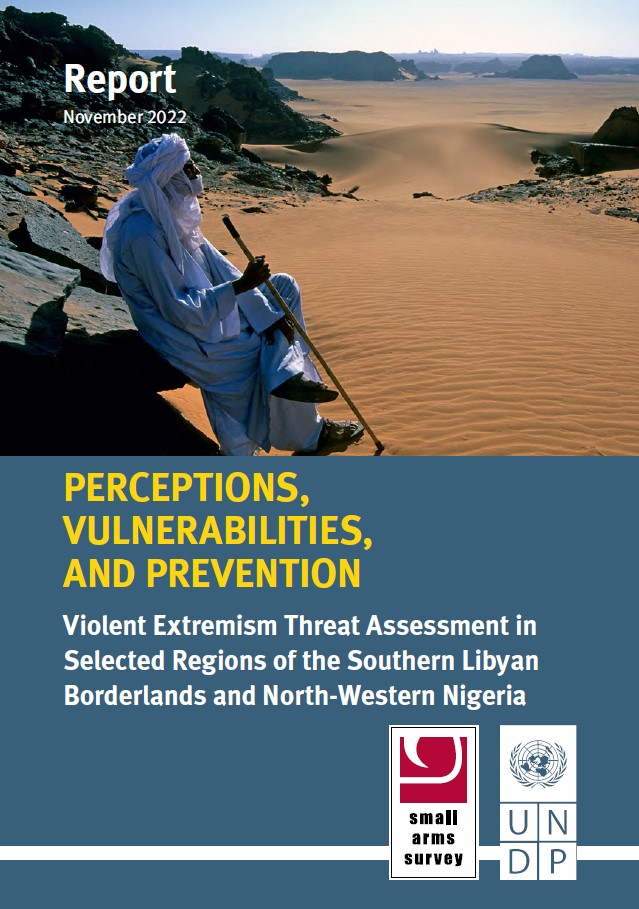
Perceptions, Vulnerabilities, and Prevention: Violent Extremism Threat Assessment in Selected Regions of the Southern Libyan Borderlands and North-Western Nigeria
The Sahel is home to a number of marginalized borderlands—such as Libya’s southern border region—characterized by the movement and activities of various armed groups, the absence of strong state institutions, and the prevalence of disparaged communities. Potentially, the combination of these factors makes the subregion more exposed to risk and individuals raised in such borderlands can be especially vulnerable to recruitment by violent extremist groups.
Perceptions, Vulnerabilities, and Prevention: Violent Extremism Threat Assessment in Selected Regions of the Southern Libyan Borderlands and North-Western Nigeria—a report by the Small Arms Survey's Security Assessment in North Africa (SANA) project and UNDP—seeks to better understand the dynamics of these risk factors in southern Libya and the neighbouring countries of Chad, Niger, and Sudan, as well as Nigeria.
The report finds that hardship and deprivation, the combination of discrimination and marginalization along ethnic, tribal, or religious lines, and a comparatively limited access to basic services, are of particular concern from a prevention of violent extremism (PVE) perspective. The report also notes that perceptions of small arms varied significantly across the case studies, with respondents in Nigeria and Sudan reporting the highest levels of proliferation. The sources of weapons cited by respondents included the illegal market, the legal market, craft production, inheritance, state authorities, and employers.
More about the Security Assessment in North Africa (SANA) project